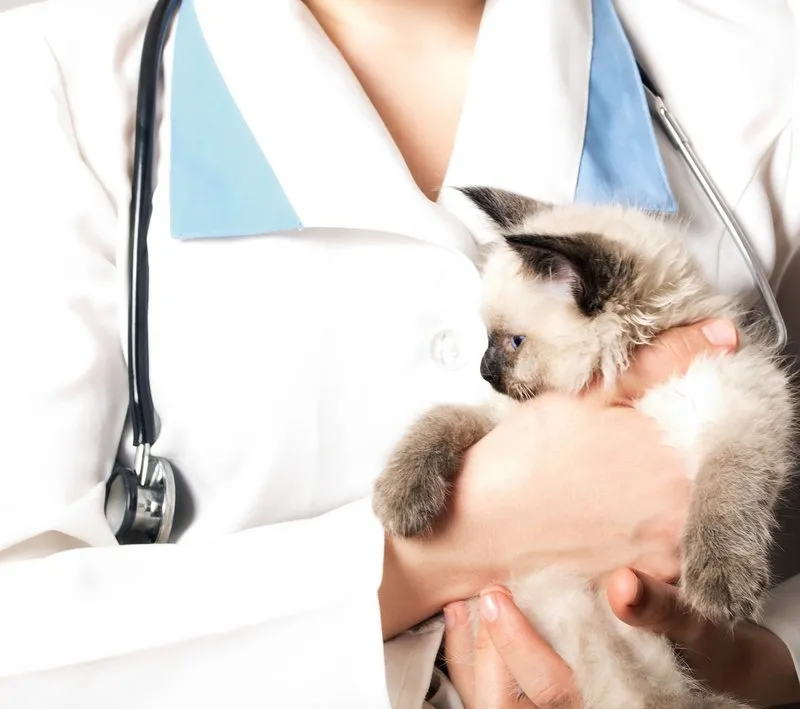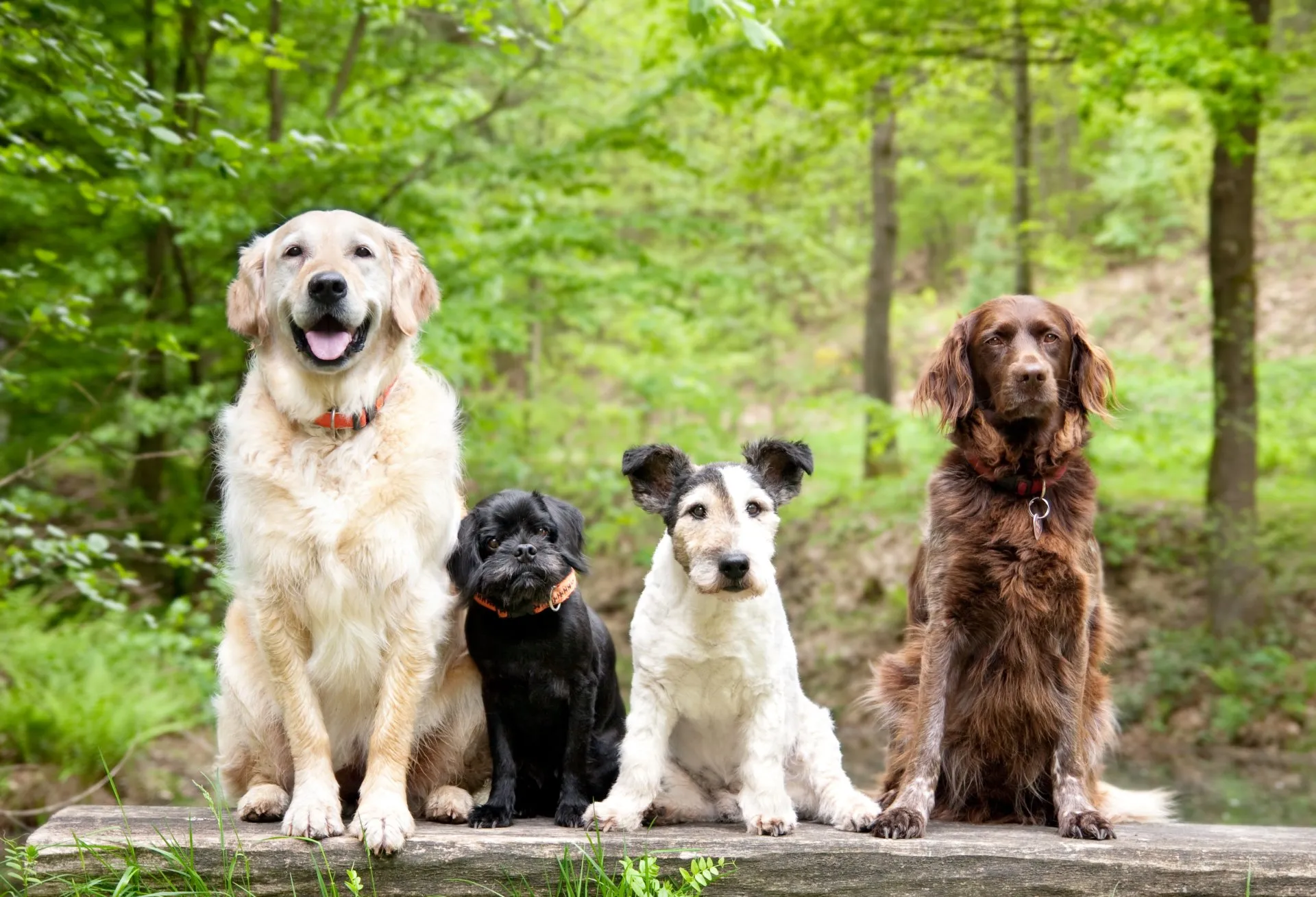Our feline friends have strikingly beautiful eyes. Cats’ eyes can be many different colors, from green to orange to blue. Fluffy never has brown eyes, but her peepers can be many other colors, including copper, dichroic, or odd-colored. Of course, pets are susceptible to many of the same types of eye problems as humans can develop. A local vet discusses some common ones in this article.
Common Issues
Pink eye, or conjunctivitis, is fairly common in kitties. Pinkeye can be caused by bacterial or fungal infections, viruses, scratches from other animals, or allergens. Our feline friends are also susceptible to glaucoma; inflammation; cataracts, which are common in older pets; keratitis, or corneal inflammation; and uveitis, which is a basic umbrella term for infection and/or inflammation of the the colored part of the eye. Contact your veterinarian immediately if you notice any of these in your pet. Many of these conditions are treatable, but they require prompt veterinary care.
Signs
Many signs of kitty eye problems are visible to the naked eye. Excessive tearing is one red flag. You may notice excessive eye gunk, which may be brown, green, white, or yellow. Your pet may seem sensitive to light. You may also see her third eyelid, which normally should be hidden. Her eyes and/or lids may look red, pink, watery, or swollen. Fluffy may also blink or paw at her eye. Some issues, such as cataracts, cause a milky or cloudy appearance. It’s also worth mentioning that eye problems in cats can also lead to behavioral changes, such as withdrawal or grumpiness. Contact your vet ASAP if you notice any of these things. Our Veterinary Diagnostics services can help identify and diagnose various eye conditions in cats, ensuring prompt and accurate treatment.
Preventing Problems
Although there’s no way to protect your cute pet from congenital eye issues, which are inherited, there are ways to prevent or at least reduce the risk of injury or infection. Just keeping an ‘eye’ on your feline buddy will help a lot. Your kitty’s eyes should be clear and bright … at least when they’re actually open. Keeping Fluffy indoors will also help, as she won’t be exposed to things like pollen, other animals, contagious disease, and chemicals. Last but certainly not least, be sure to bring your cat to the vet regularly for exams. If you’re having trouble getting your cat to the vet, check out our article on Helpful Tips to Get Your Cat to the Vet for some practical advice.
Our Advice on Eye Problems In Cats in 2025
How often should cat owners perform at-home eye examinations on their pets?
Cat owners should perform at-home eye examinations on their pets weekly. Regularly checking for signs of eye problems, such as excessive tearing, redness, swelling, or unusual discharge, can help detect issues early. Look for behavioral changes, like increased pawing at the eyes or sensitivity to light. If any abnormalities are noticed, contact a veterinarian promptly for professional evaluation. Keeping a close watch on your cat’s eye health between regular veterinary visits can help maintain their overall well-being and prevent potential eye problems from worsening.
Are certain breeds of cats more prone to specific eye problems?
Certain cat breeds are indeed more prone to specific eye problems. Persian and Himalayan cats often suffer from tear duct issues and entropion, where the eyelid rolls inward. Siamese cats are more susceptible to progressive retinal atrophy (PRA) and strabismus, a condition causing crossed eyes. Maine Coons can develop hereditary retinal degeneration. Regular veterinary check-ups and vigilant at-home eye examinations can help manage these breed-specific issues, ensuring early detection and treatment to maintain optimal eye health for these susceptible breeds.
What role does nutrition play in maintaining good eye health for cats?
Nutrition plays a crucial role in maintaining good eye health for cats. A balanced diet rich in essential nutrients like taurine, vitamins A and E, and omega-3 fatty acids supports retinal health and prevents conditions like cataracts and retinal degeneration. Taurine, in particular, is vital for preventing retinal issues and blindness. Providing high-quality, species-appropriate food ensures cats receive the necessary vitamins and minerals to maintain overall eye health. Regularly consult with a veterinarian to ensure the cat’s diet meets all nutritional needs for optimal eye and overall health.
How can owners differentiate between normal eye discharge and signs of infection?
Owners can differentiate between normal eye discharge and signs of infection by observing the color, consistency, and associated symptoms. Normal discharge is typically clear or slightly brownish and minimal. Signs of infection include thick, yellow, green, or white discharge, often accompanied by redness, swelling, excessive tearing, squinting, or pawing at the eyes. Infections may also cause behavioral changes such as irritability or withdrawal. If any of these signs are present, it’s crucial to contact a veterinarian for proper diagnosis and treatment to prevent complications.
What are the potential complications if feline eye problems are left untreated?
If feline eye problems are left untreated, potential complications can include chronic pain, vision loss, and blindness. Conditions like conjunctivitis, if untreated, can lead to severe infections and corneal ulcers. Glaucoma and uveitis can cause increased intraocular pressure, leading to permanent eye damage. Untreated cataracts may progress to complete opacity, impairing vision. Additionally, ongoing inflammation and infection can affect a cat’s overall health, leading to systemic issues. Prompt veterinary care is essential to diagnose and treat eye problems, preventing these serious complications and ensuring the cat’s well-being.
Do you have questions or concerns about your pet’s health or care? Call us, your animal hospital in West Greenwich, RI, anytime.




!Social Media Icons